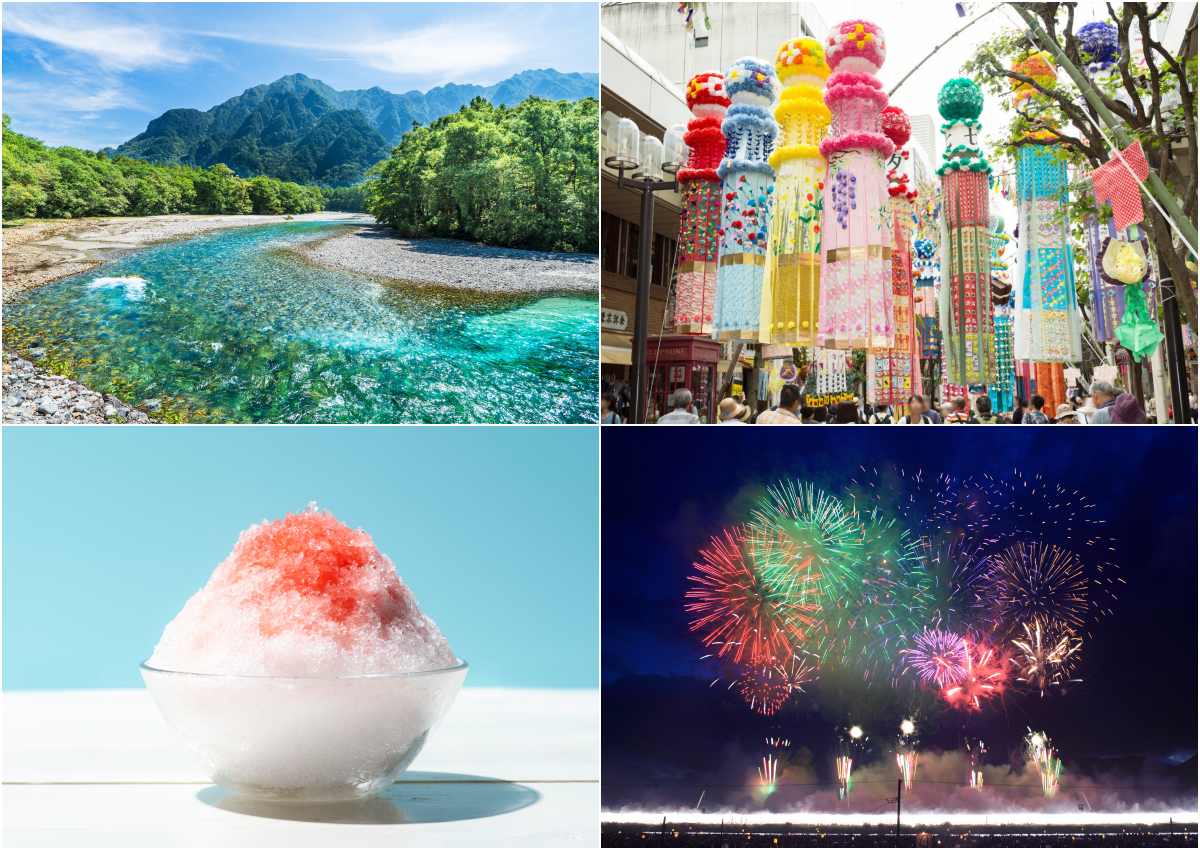
August is known as the hottest month of the year in Japan, and it's also when the country's summer scenery and customs are most vibrant. The sound of cicadas ringing out under the blue sky, fireworks lighting up the night, time spent returning home with family, and the festive atmosphere of bon dances and summer festivals—all are part of what makes this season special. From enjoying seasonal foods to experiencing the changing of the seasons through all five senses, August in Japan offers a unique charm. In this article, we’ll introduce a wide range of summer traditions that symbolize August in Japan, including seasonal events, food culture, and natural landscapes.
*By purchasing or reserving products introduced in this article, a portion of the sales may be returned to FUN! JAPAN.
* If you purchase or make a reservation for the products introduced in the article, a part of the sales will be FUN! It may be returned to JAPAN.
🚅Book your Shinkansen ticket with NAVITIME Travel! 👉 Click here
👉Enjoy a more convenient trip to Japan with NAVITIME eSIM!
Holidays and Observances in Japan in August
Risshū (Around August 7)
"Risshū" is one of the 24 solar terms and marks the beginning of autumn according to the traditional calendar. In reality, it is still very hot during this time, but the air in the early morning and evening, as well as the sounds of insects, give a hint of the coming season. It also influences seasonal greetings and letters. In traditional Japanese sensibility, "Risshū" is seen as a significant marker that prompts awareness of changes in nature.
Mountain Day (August 11)

Mountain Day was established in 2016 as a national holiday with the purpose of "providing opportunities to get familiar with mountains and be thankful for their blessings." Often combined with the Obon holidays, it becomes part of an extended break, and many people take the chance to enjoy outdoor leisure activities like mountain climbing, hiking, and camping.
Obon (Around August 13 to 16)

Obon is a traditional annual event in Japan where people welcome and honor the spirits of their ancestors. The custom typically involves lighting a welcoming fire (mukaebi) on August 13 to receive the spirits and a send-off fire (okuribi) on the 16th to see them off. Depending on the region, there may also be bon dances, floating lantern ceremonies, and offerings using decorated eggplants or cucumbers called "shōryō-uma."
End of World War II Memorial Day (August 15)
August 15 is recognized as the day World War II ended in 1945 and is known as the "End of World War II Memorial Day" in Japan. A national memorial service for the war dead is held by the government at the Nippon Budokan in Tokyo.
Shosho (Around August 23)
"Shosho" is another of the 24 solar terms, referring to the time when the intense heat starts to ease. Although the lingering summer heat remains strong, the mornings and evenings begin to cool slightly, and scale-like clouds can be seen in the sky, indicating the gradual arrival of autumn. In agriculture, this is the time when rice plants start to produce ears, and it has long been recognized as an important seasonal milestone.
What Are Some Classic Japanese Traditions and Events in August?
Bon Odori (Bon Dance)
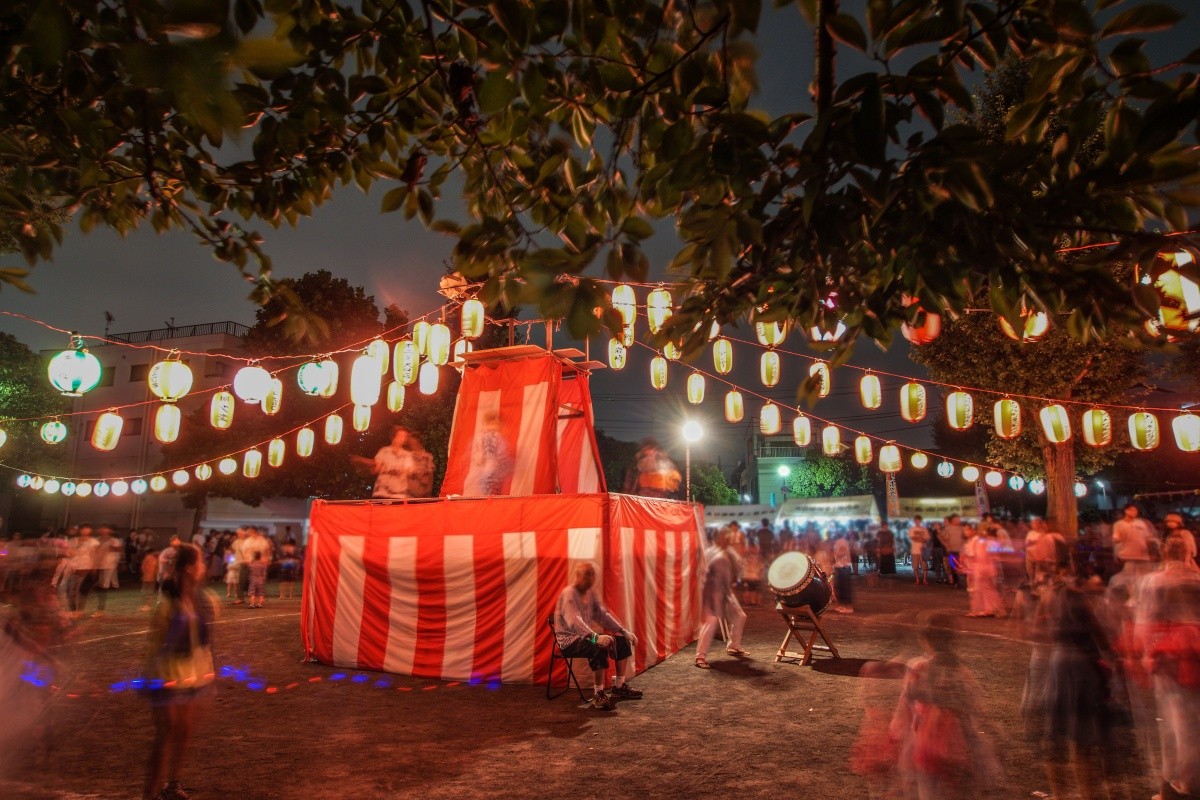
Bon Odori, which brightens up summer nights with music and dancing, is a traditional event held across Japan. Each region has its own unique style of dance and music, and the sight of people in yukata dancing in a circle is the epitome of Japanese summer. Many of these events welcome tourists to join in, creating a great opportunity to connect with locals.
Fireworks Festivals
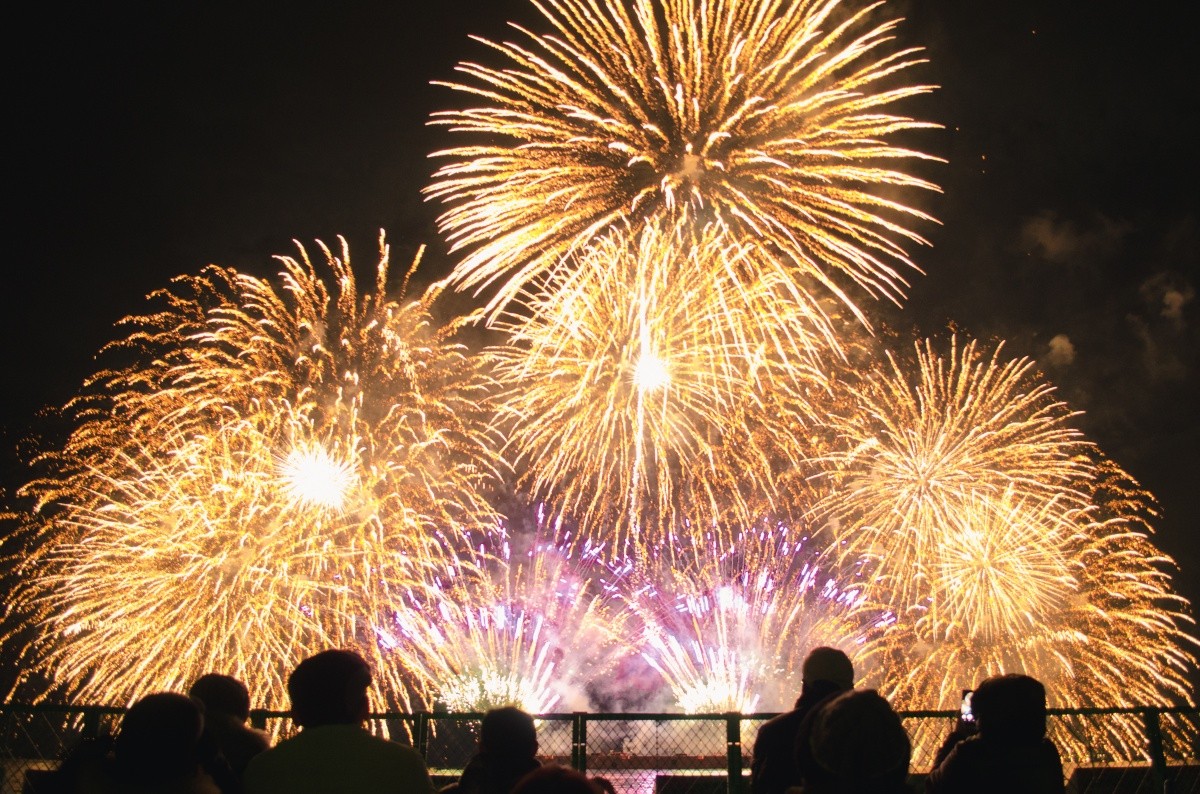
Fireworks lighting up the night sky are one of the most iconic sights of summer in Japan. Among the most famous are the "Nagaoka Festival Grand Fireworks Show" (Niigata Prefecture) and the "National Fireworks Competition – Omagari Fireworks" (Akita Prefecture), both of which attract large crowds from across Japan and abroad. These events, held in August, are known for their spectacular displays that combine music with fireworks, including rapid-fire launching of huge shells. Watching fireworks by a river or the sea adds a refreshing touch to summer evenings and creates unforgettable memories.
Zansho-mimai (Late-Summer Greeting Cards)
After Risshū (the beginning of autumn) in early August, seasonal greetings shift from shochū-mimai (mid-summer greetings) to zansho-mimai (late-summer greetings). This uniquely Japanese custom involves sending postcards or cards to check in on others, especially those to whom one is indebted or hasn't seen in a while. While digital communication has become more common in recent years, a handwritten card still conveys warmth and preserves a sense of seasonal tradition.
Summer Bargain Sales

Summer sales that begin in July continue into August at many stores. Clothing, accessories, home goods, and electronics are often heavily discounted, making this a bustling season for shoppers. In late August, many stores hold "final sales" with even deeper discounts.
👜 When do the summer bargain sales start? Check the dates here
Homecoming & Travel Rush
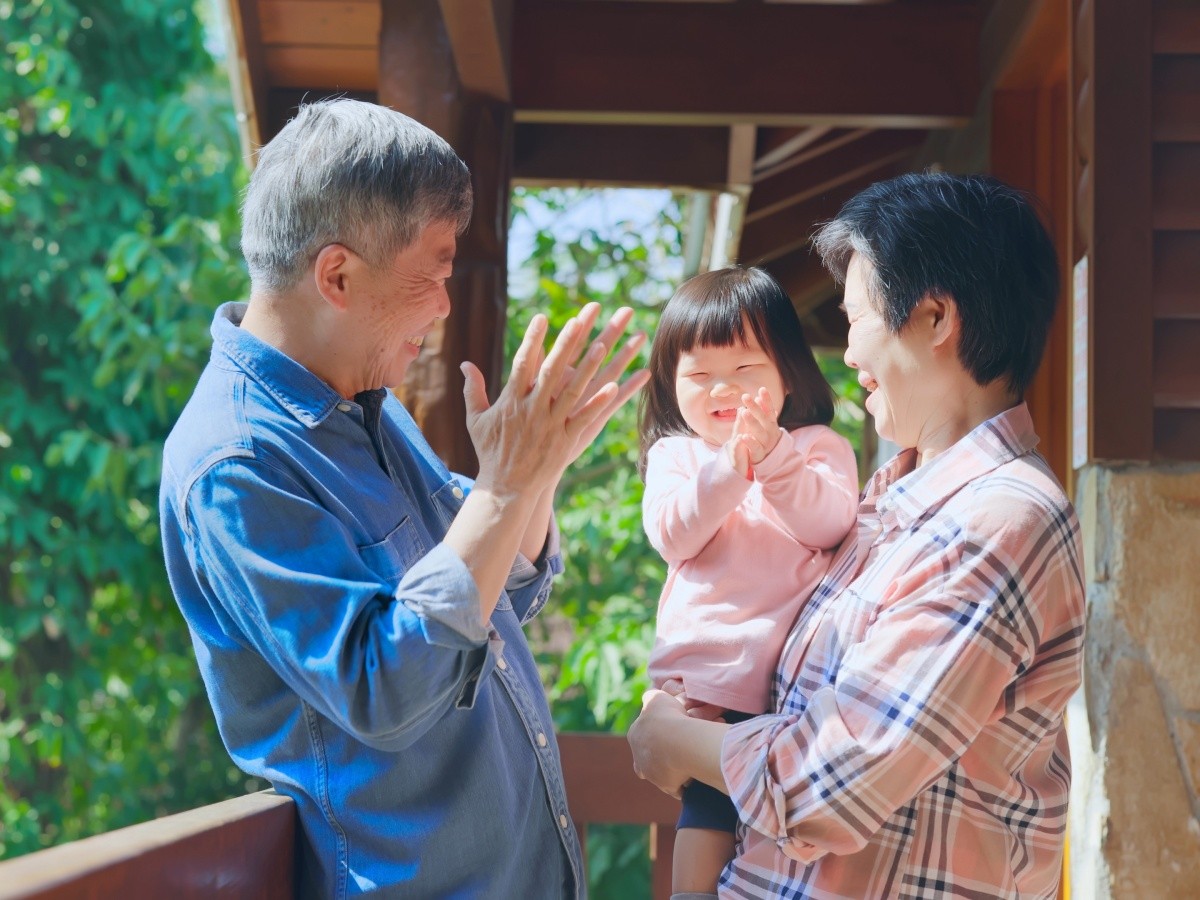
During Obon, a Buddhist holiday in mid-August, many people return to their hometowns, causing heavy congestion on trains, highways, and at airports. This annual phenomenon is known as the "homecoming rush" (kisei rush) and is a familiar topic on the news. Spending time with family and relatives during this period offers a peaceful break from daily routines.
🚅Book your Shinkansen ticket with NAVITIME Travel! 👉 Click here
Beach Outings
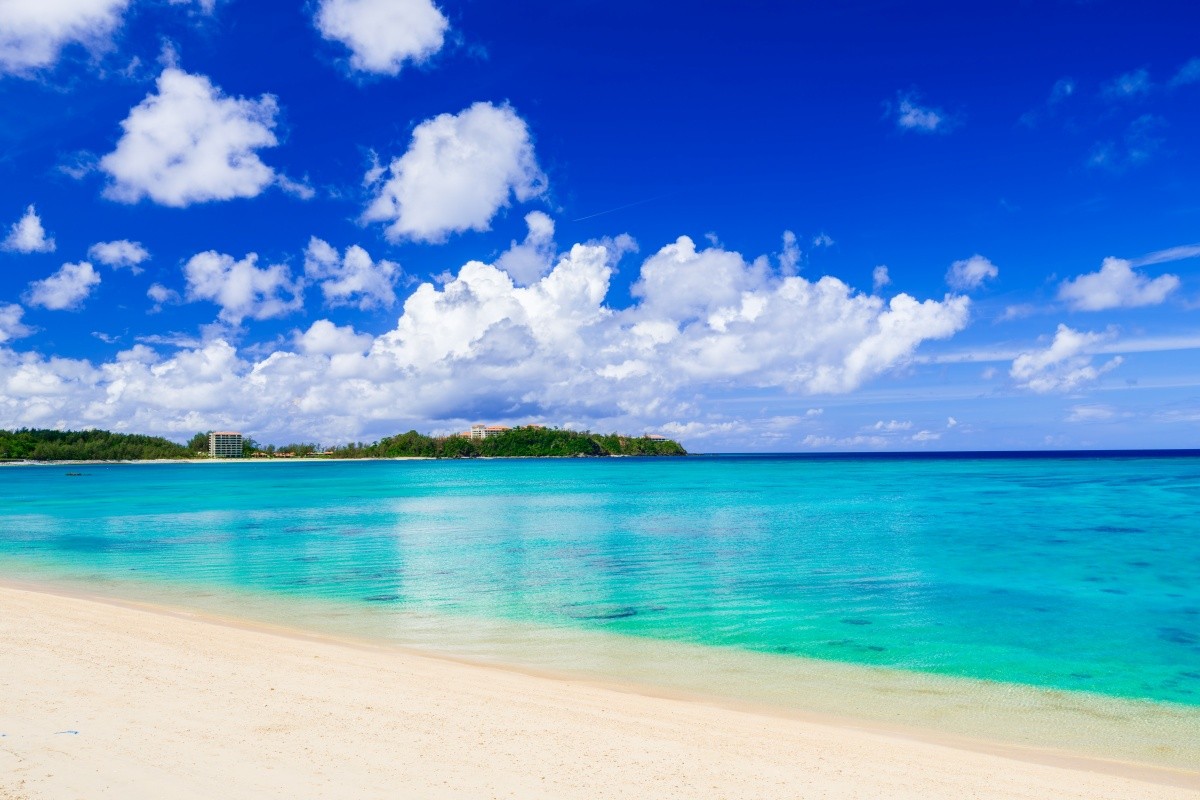
A classic summer activity, swimming and relaxing at the beach is especially popular in August, when ocean temperatures are warm. Beaches across Japan fill with people enjoying everything from lounging under beach umbrellas to marine sports.
🌊Shop recommended beach items (via Yahoo! Shopping)
Cicada Songs
The buzzing of cicadas is one of the most iconic sounds of midsummer in Japan. Until mid-August, loud species like the abura-zemi and minmin-zemi dominate, but as the month progresses, tsukutsukubōshi cicadas appear, with their rhythmic "oh-shii tsuku-tsuku" calls. This subtle change in sound seems to signal the quiet approach of summer’s end.
Bell Crickets
In the latter half of August, the gentle, clear chirping of suzumushi (bell crickets) can be heard at night. Unlike the noisy daytime cicadas, their sound brings a sense of calm and the passing of seasons. For many, hearing these insects marks the transition from summer into autumn.
High School Baseball (Summer Koshien)
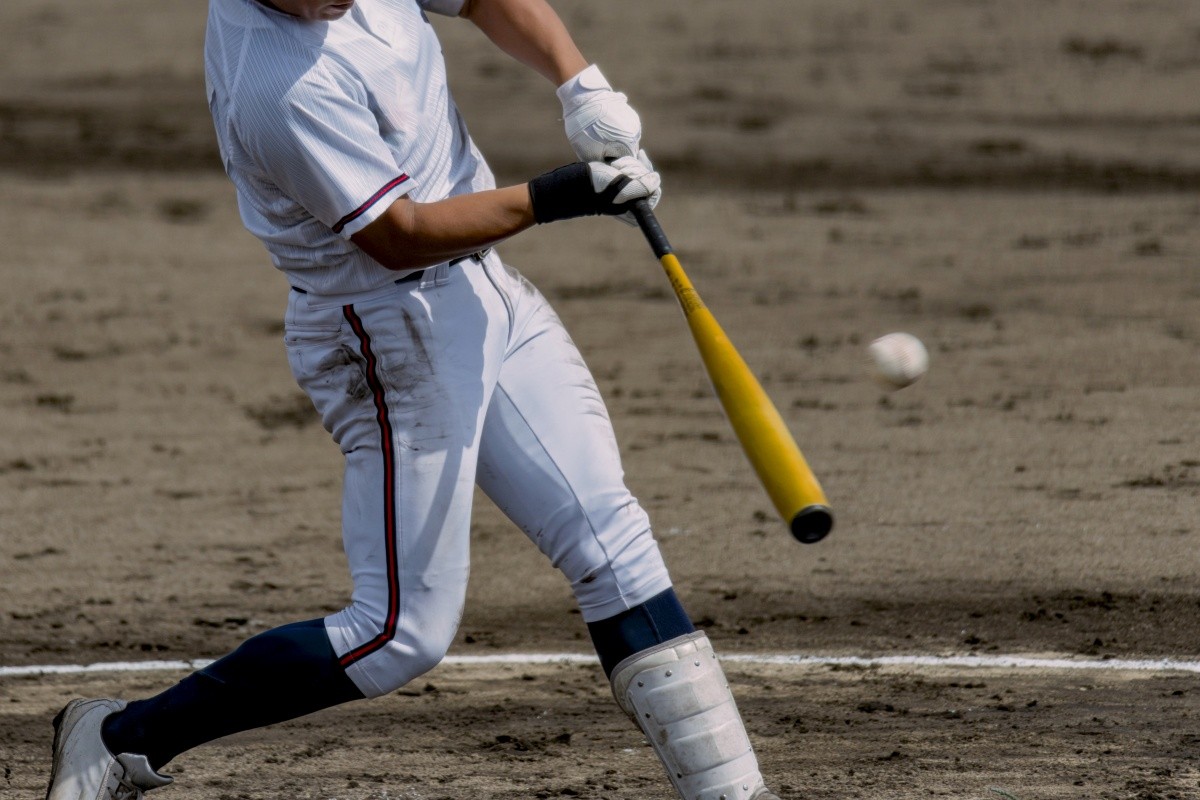
The National High School Baseball Championship, better known as "Summer Koshien", is held in August at Hanshin Koshien Stadium in Nishinomiya, Hyogo Prefecture. Representing their regions after winning local qualifiers, teams of high school players gather to compete in a series of emotional and dramatic matches. Their earnest efforts and the passionate cheers from the stands make this one of Japan’s most beloved summer traditions.
What foods are associated with August in Japan?
Kakigori (Shaved Ice)
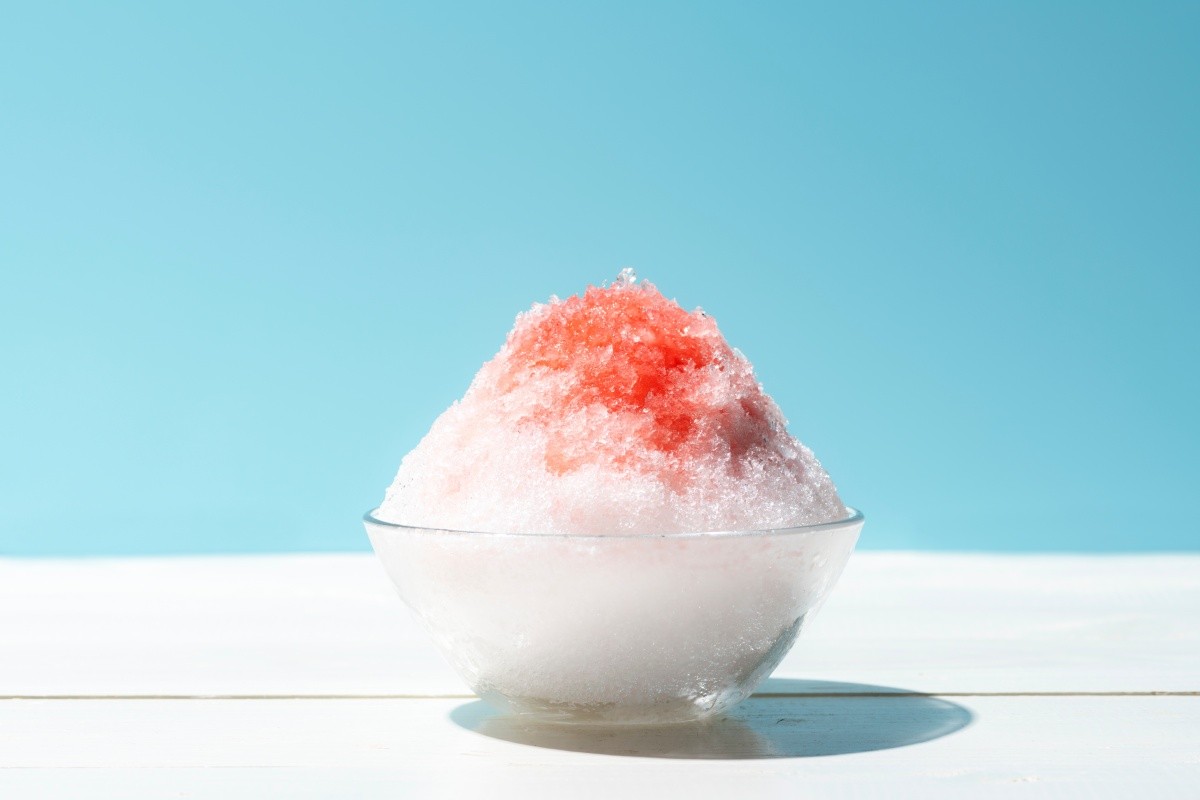
In August, when the sun is strong and the humidity is high, kakigori—a classic Japanese summer sweet—offers a cool escape. Made with fluffy shaved ice topped with syrup flavors like strawberry, melon, or matcha, and enhanced with toppings such as sweet red beans, condensed milk, or mochi, it's a refreshing treat that’s as colorful as it is tasty.
🍧 【Tabelog】Shaved ice shops in Tokyo
Watermelon

A must-have fruit during Japan’s sweltering August, watermelon is beloved for its juicy sweetness and crisp texture that soothes heat-weary bodies. Whether enjoyed at home or during festivals, beach trips, or camping, it's a summer icon often associated with the traditional game suika-wari (watermelon smashing).
Melon
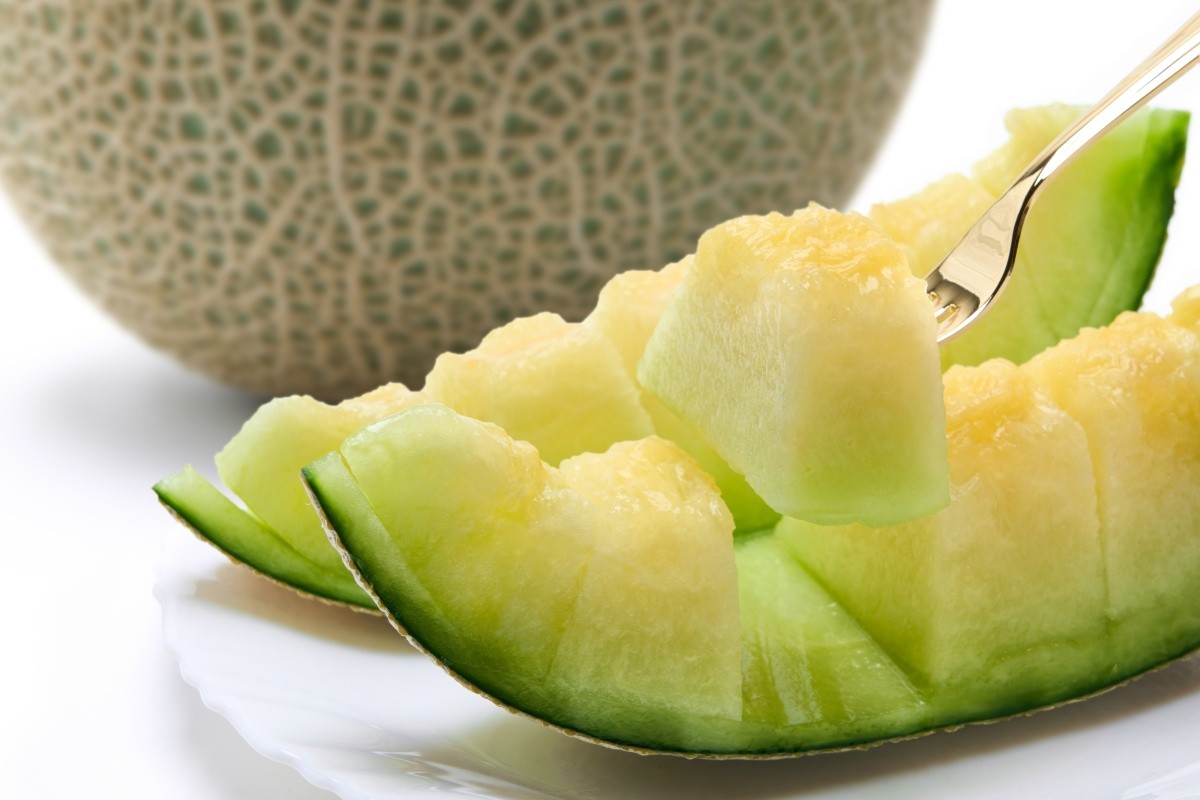
Melons are a popular summer gift in Japan, prized for their rich aroma and melt-in-your-mouth sweetness. High-end melons from regions like Hokkaido, Ibaraki, and Shizuoka reach their peak season in August. They’re not only delicious chilled and eaten as is, but are also enjoyed in sweets like kakigori and parfaits.
Nashi (Japanese Pear)

Japanese pears, or nashi, begin appearing in mid-August. Known for their crisp bite and refreshing sweetness, these juicy fruits are perfect for beating the summer heat. Popular varieties like Kosui and Hosui are in season, and in some regions, visitors can enjoy pear picking. Served chilled, they’re a perfect way to cool off.
Nagashi Somen (Flowing Somen Noodles)
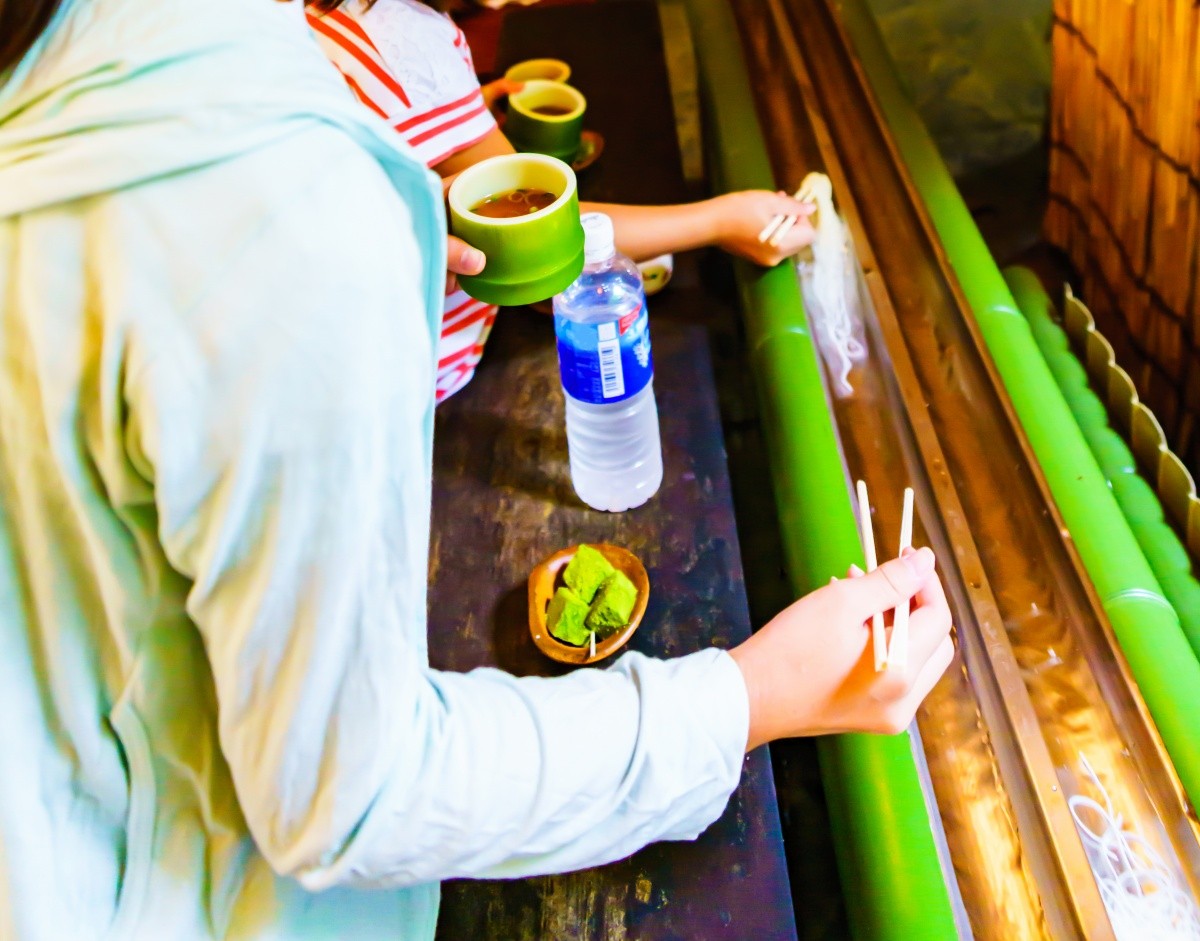
A uniquely Japanese summer tradition, nagashi somen involves catching cold somen noodles as they flow down a bamboo flume with icy water. Dipped in a savory sauce with various toppings, this interactive and visually cooling experience is as much about fun as it is about flavor.
Barbecue
Summer is peak season for outdoor activities, and barbecues are a favorite way to spend time with family and friends—especially during the Obon holidays, or by the beach and rivers. Grilling meats, vegetables, and seafood over charcoal becomes a cherished summer memory. In recent years, “hands-free” barbecue options at parks and campsites have made this activity even more accessible.
Major Fireworks Festivals in Japan in August
Nagaoka Fireworks Festival (Niigata)
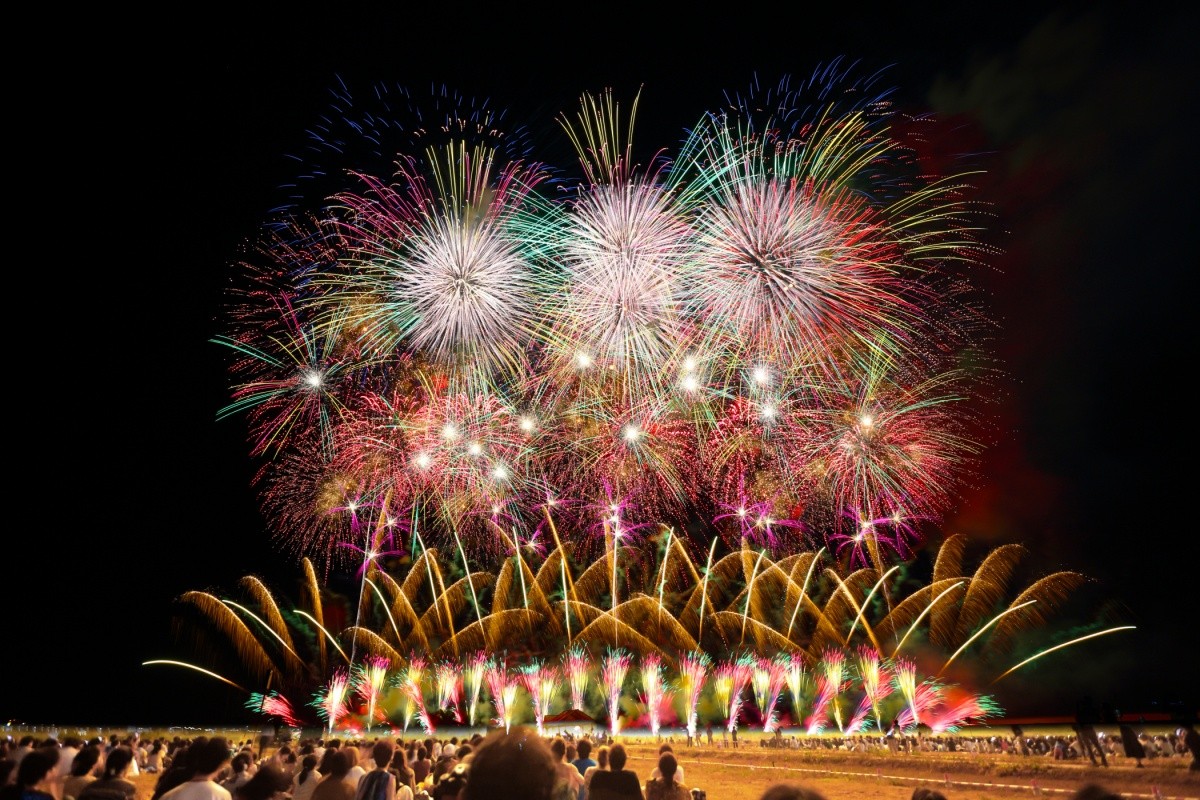
Recognized as one of Japan’s top three fireworks festivals, the Nagaoka Fireworks Festival takes place along the Shinano River and is known for its immense scale. Highlights include the “Phoenix” fireworks launched as a prayer for recovery, and gigantic sanjakudama (30-inch shells) that explode into bursts 650 meters wide. Reserved seating is available, so advance ticket booking is recommended.
- Typically held: August 2nd & 3rd
🎆 Japan's three major fireworks festivals will also be held! Summary of fireworks festivals in Niigata
[kkday]👉Nagaoka Fireworks: Guaranteed Access to the Heart of the Spectacle
Omagari Fireworks (Akita)
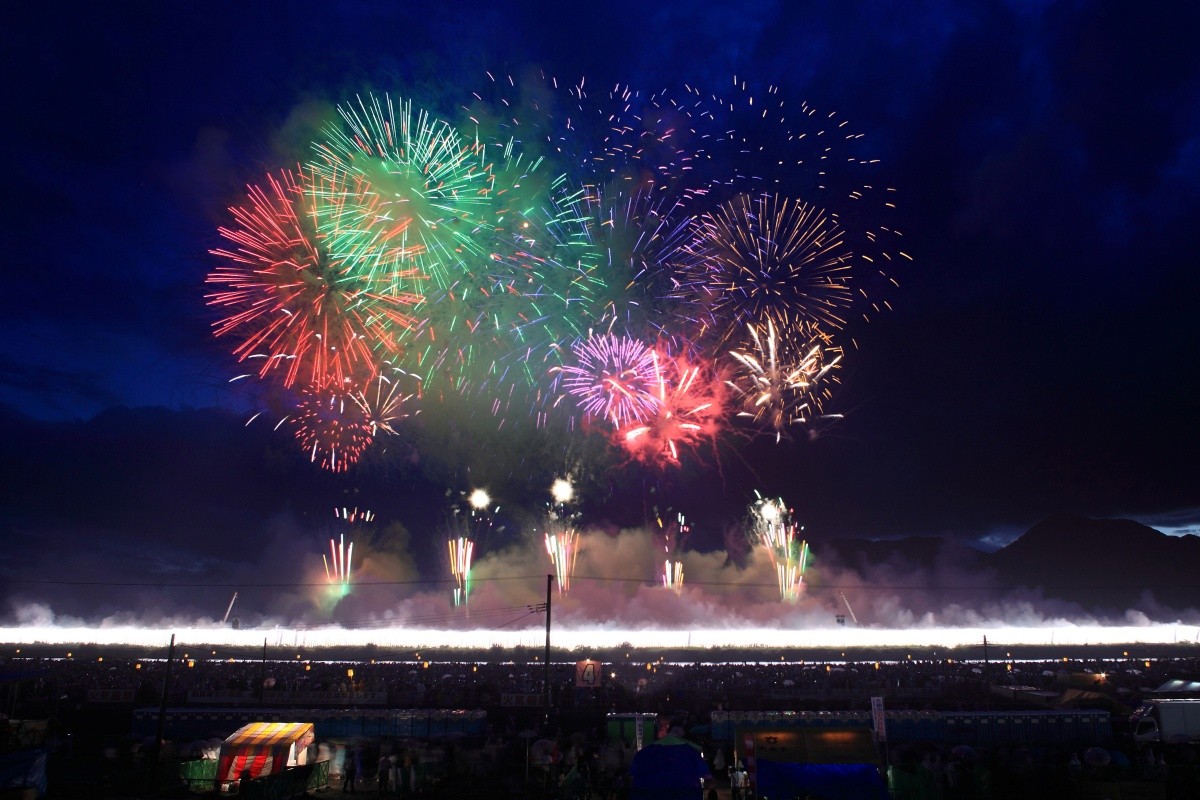
The official name is "National Fireworks Competition." Known as a place where fireworks experts from across Japan compete in skill, this event captivates the audience with its artistic structure and exceptional quality. Everything from the launch timing and visual presentation to the harmony with music is judged, making it a fireworks display where you can fully enjoy the mastery of craftsmanship up close. Watching fireworks light up the night sky against a beautiful rural backdrop offers a truly unique experience.
- Typically held: 4th Saturday of August
🎆 "Three major fireworks festivals in Japan" and "3 fireworks festivals in Japan"
[kkday]👉Omagari Hanabi Fireworks Viewing tour
Lake Suwa Fireworks Festival (Nagano)
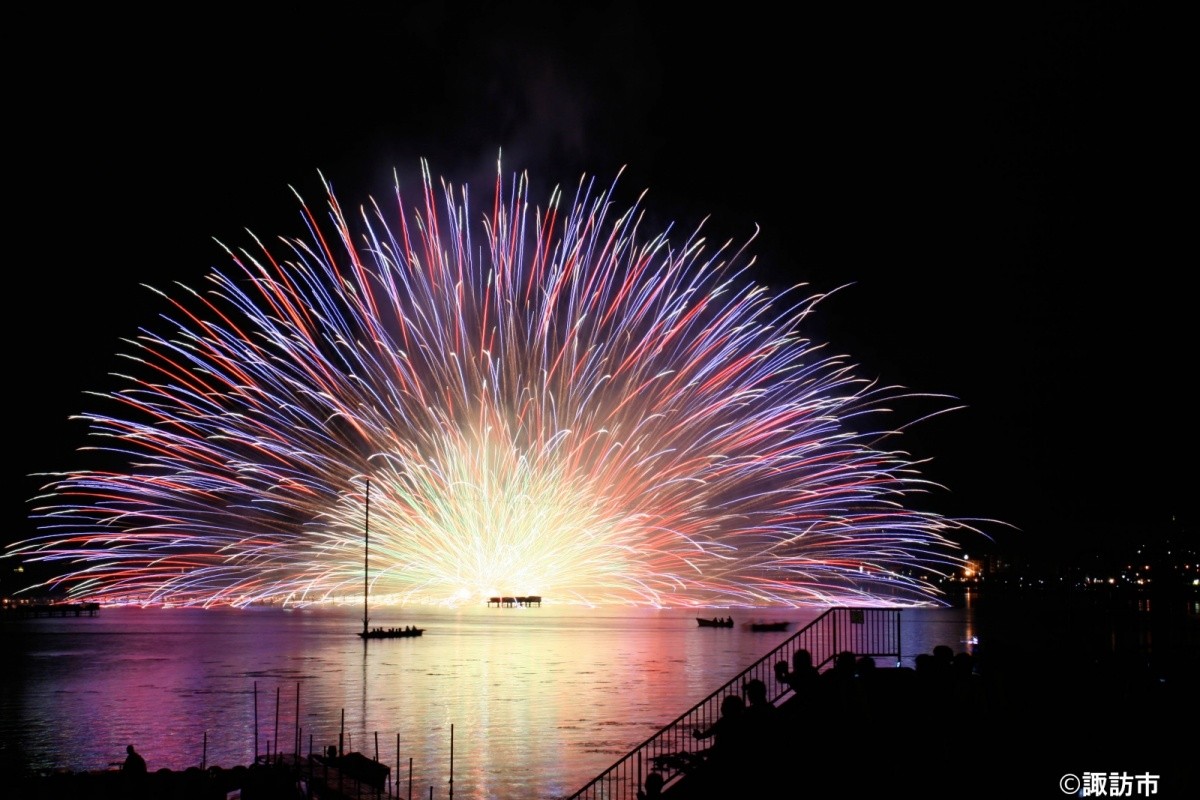
Held at Lake Suwa in Nagano Prefecture, the "Lake Suwa Fireworks Festival" is one of the largest in the country in terms of number of fireworks launched. Known for its echoing blasts across the lake surface and massive star mines that fill the entire sky, this event also offers enchanting views of fireworks reflected on the water depending on where you watch from. Suwa, a popular tourist destination, provides a charming location that enhances the beauty of the fireworks even further.
- Usually held: August 15
[kkday]👉Nagano, Japan|Lake Fireworks Festival・Suwa Lake Fireworks Festival 1-Day Tour|Depart from Nagoya
Jingu Gaien Fireworks Festival (Tokyo)
The "Jingu Gaien Fireworks Festival" is a well-known urban fireworks display held in central Tokyo. Centered around Meiji Jingu Gaien, about 10,000 fireworks are launched. The event also features performances synchronized with live music in the stadium, making it a highly entertaining experience.
- Typically held: Mid-August (subject to change by year)
Famous festivals and events in Japan in August
Aomori Nebuta Festival (Aomori)
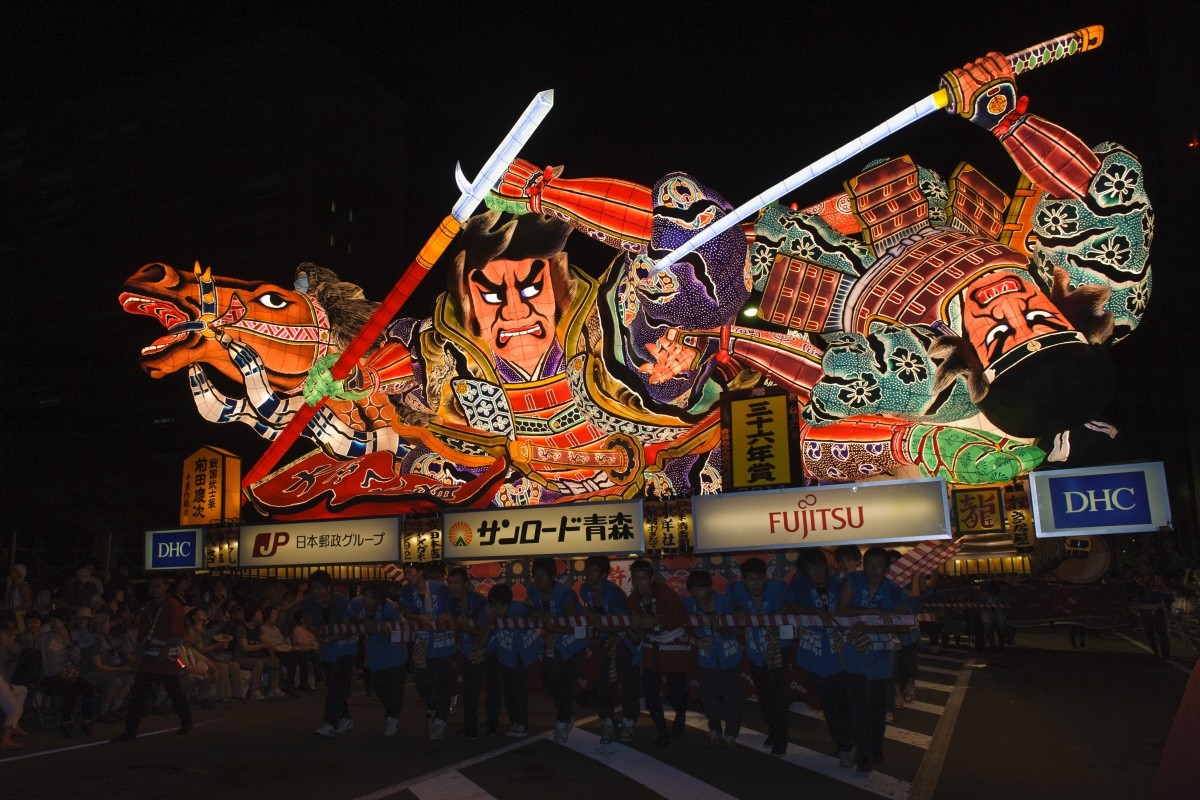
Symbolizing summer in Aomori, the "Aomori Nebuta Festival" is one of the Tohoku region’s three major festivals, featuring giant lantern floats shaped like human figures called "Nebuta" parading through the city. Following these vividly colored and powerful floats are dancers known as "Haneto," who jump along while shouting "Rassera, Rassera!" In the evenings, the lanterns are lit, creating a magical atmosphere that captivates spectators.
- Typically held: August 2–7
[kkday]👉Aomori Nebuta Festival Viewing Seat Ticket
Sendai Tanabata Festival (Miyagi)
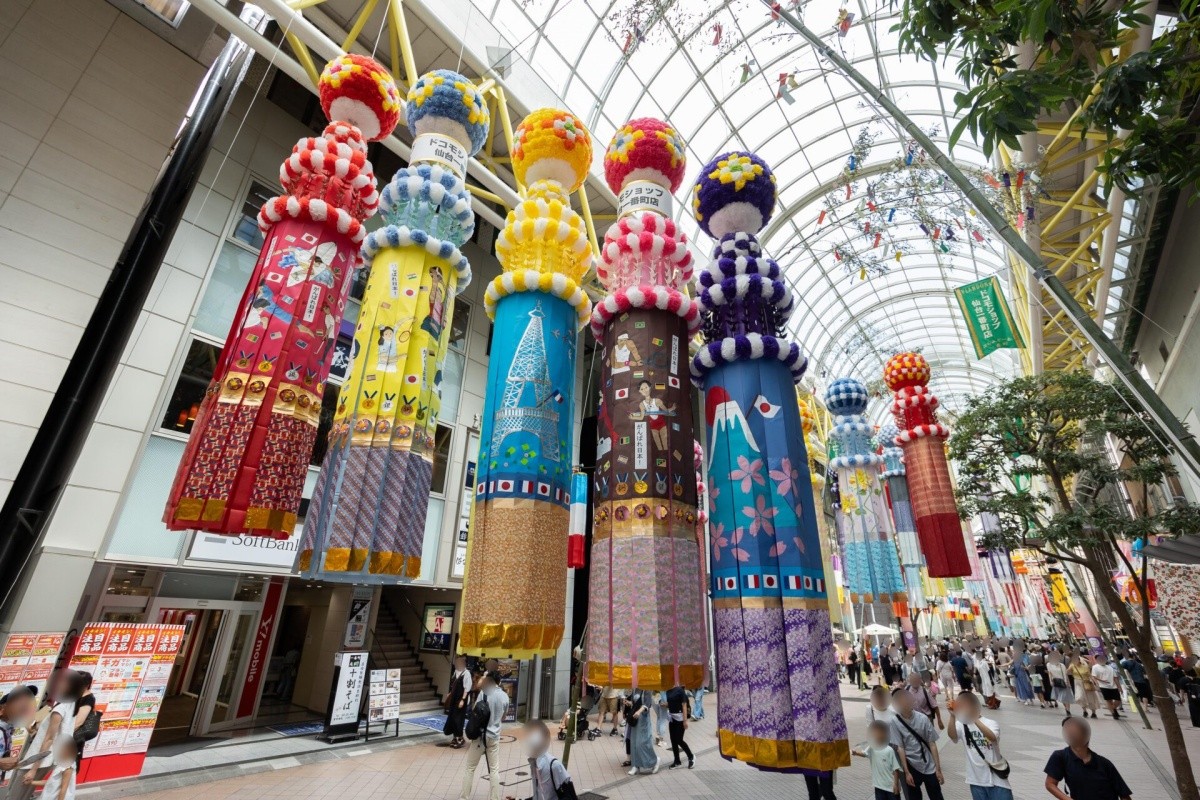
The "Sendai Tanabata Festival" is Japan’s largest Tanabata celebration, where colorful and lavish streamers decorate the arcade shopping streets, creating a graceful and vibrant event. With roots tracing back to the era of Date Masamune, the founder of the Sendai Domain, each decoration—such as tanzaku (wishes on paper), paper cranes, and drawstring pouches—carries a special meaning. At night, related events like a fireworks show are also held, wrapping the entire city in the colors of summer.
- Typically held: August 6–8
🎋 【Search on JTB】Sendai Tanabata Tohoku Travel & Tour
Gujo Odori (Gifu)

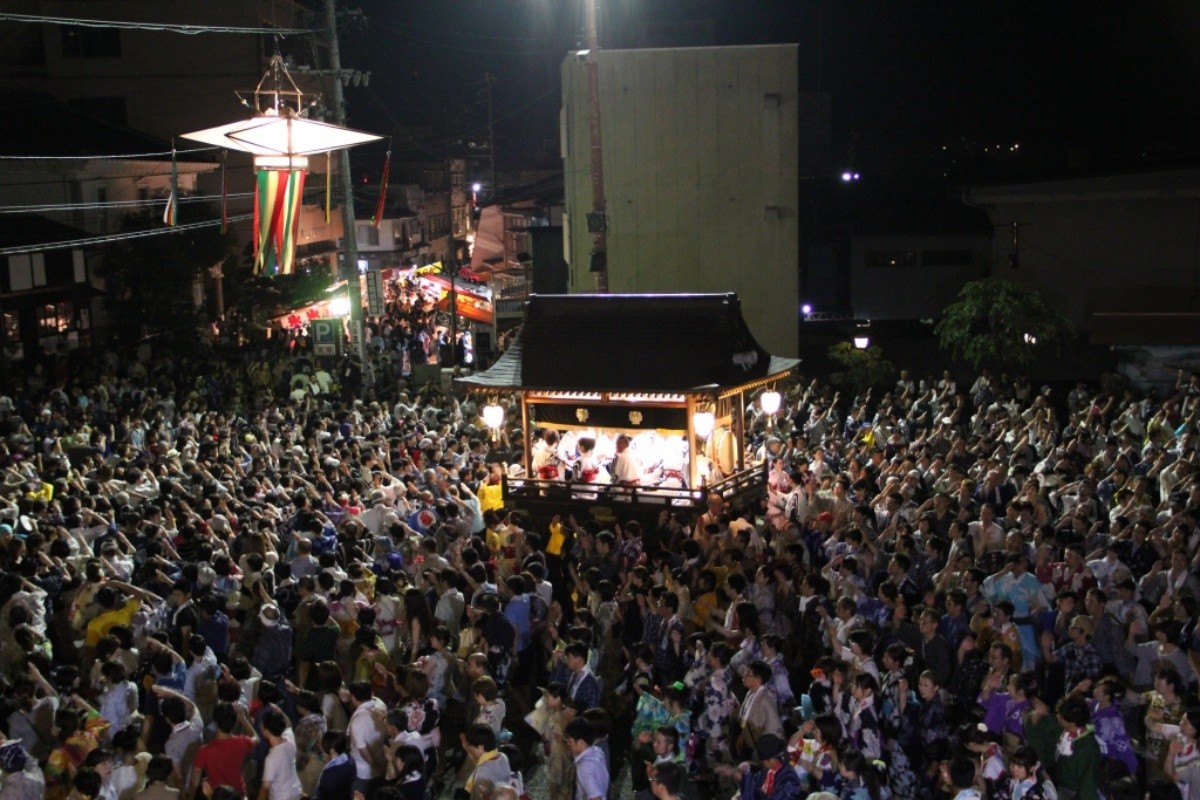
With a history of over 400 years, "Gujo Odori" is one of the most iconic Bon dance festivals, held in Gujo City, Gifu Prefecture. Spanning about 30 nights from mid-July to early September, its highlight is the "All-Night Dance" from August 13–16, where participants dance through the night in a lively atmosphere. There’s no separation between dancers and spectators, so anyone can join in freely. This open, inviting vibe draws many visitors every year.
- Typically held: Mid-July to early September (*All-Night Dance is August 13–16)
Awa Odori (Tokushima)
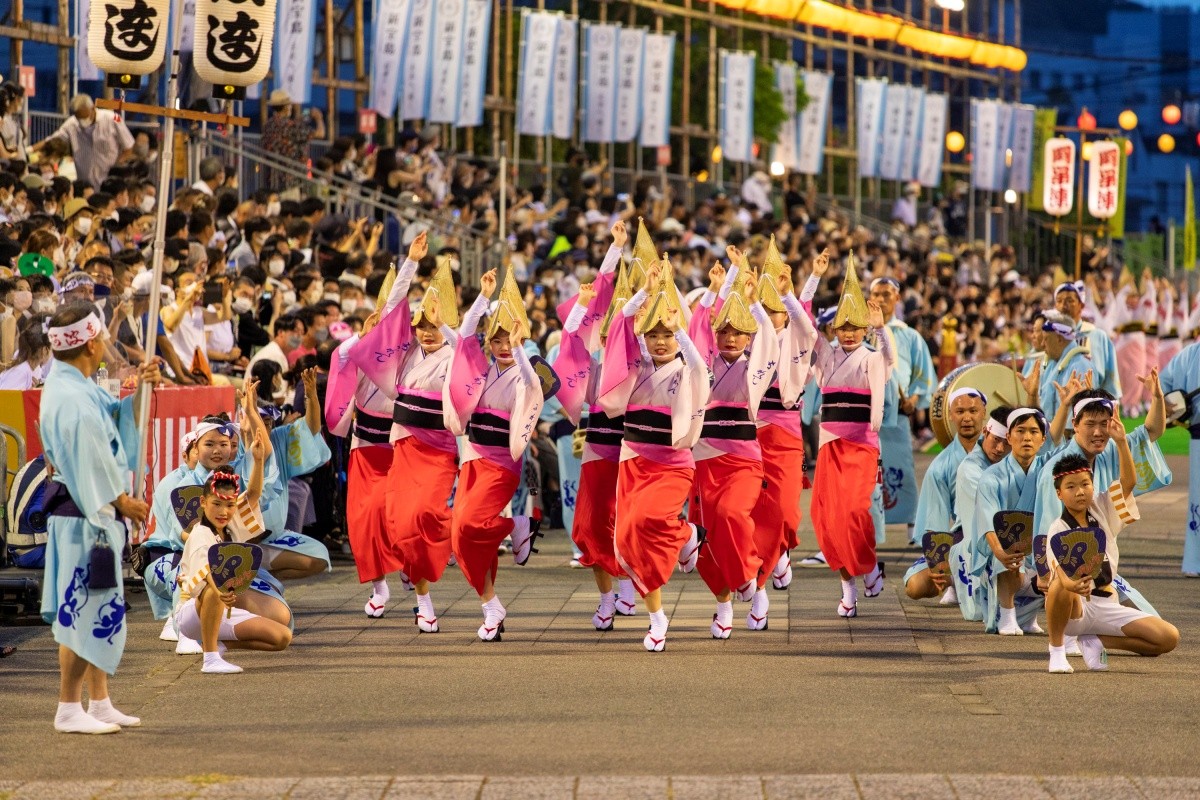
Known for the famous chant "The dancers are fools, the watchers are fools, if both are fools, you might as well dance," Awa Odori is one of Japan's three major Bon dance festivals and a symbol of summer in Tokushima Prefecture. Dancers wearing traditional costumes form groups called "Ren" and parade through the city to the lively sound of festival music. With different movements for men and women, and a mix of strength and grace in the dances, the event has a charm that fascinates many.
- Typically held: August 12–15
[kkday]👉Awa Dance Festival 1 Day Tour from Takamatsu
Kochi Yosakoi Festival (Kochi)
The "Kochi Yosakoi Festival" is known for its energetic and creative "Yosakoi dance" performed with wooden clappers called "Naruko." Dance teams from all over Japan parade through Kochi City showcasing their performances. Each team brings originality through costumes, choreography, and music, making it a competition of creativity. As a lively, community-driven event, it’s deeply loved by the locals.
- Typically held: August 9–12
[kkday]👉Kami City Yanase Takashi Memorial Hall Shared Ticket | Buy and Use Instantly | Kochi, Japan
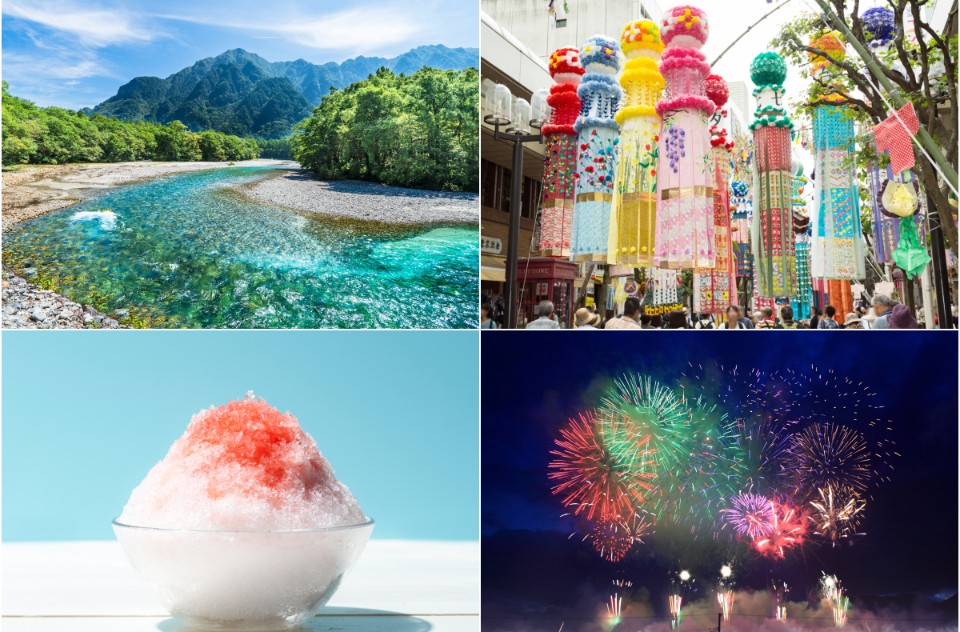
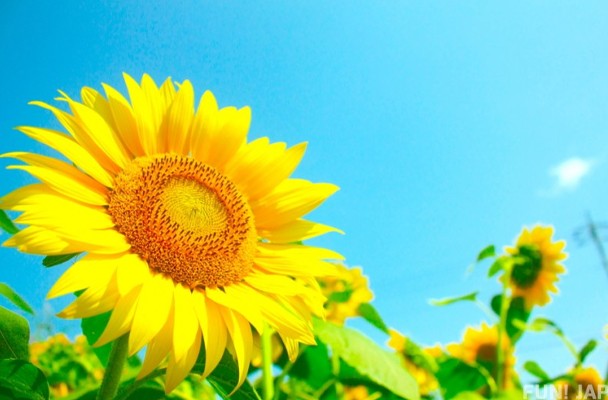
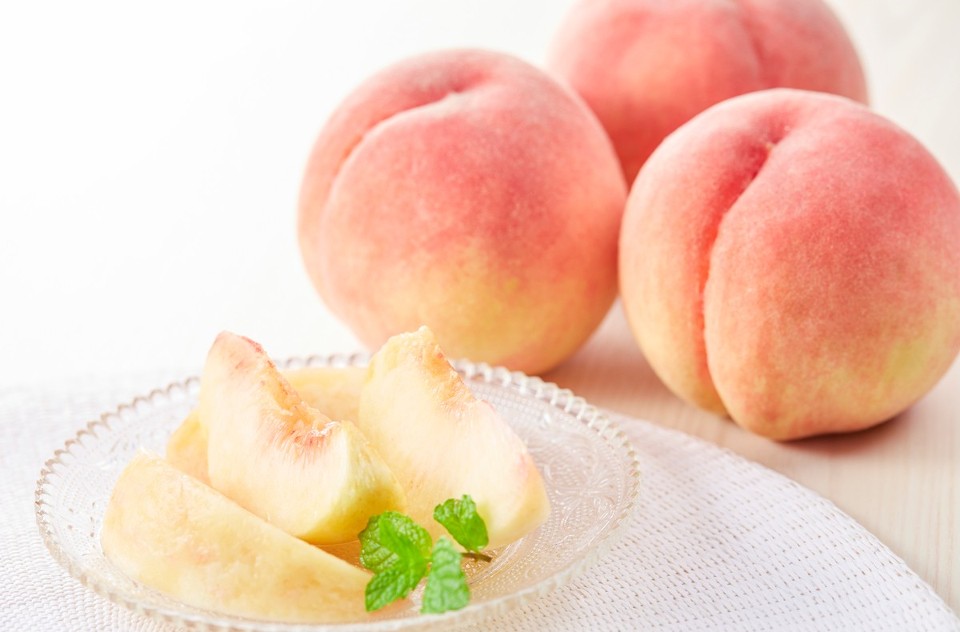

Comments